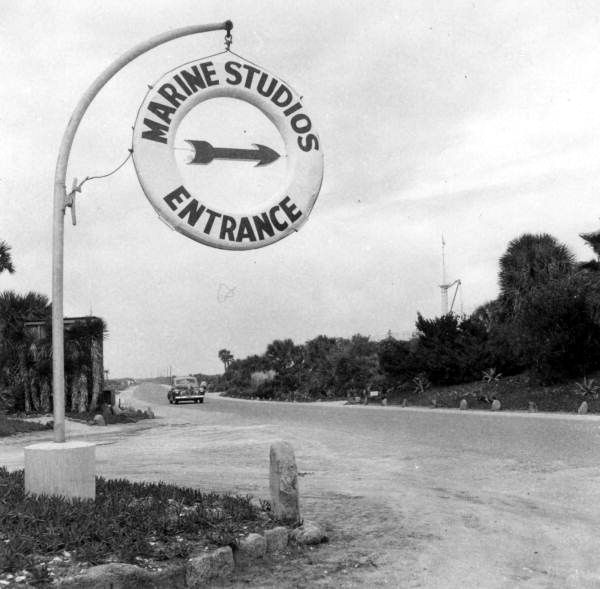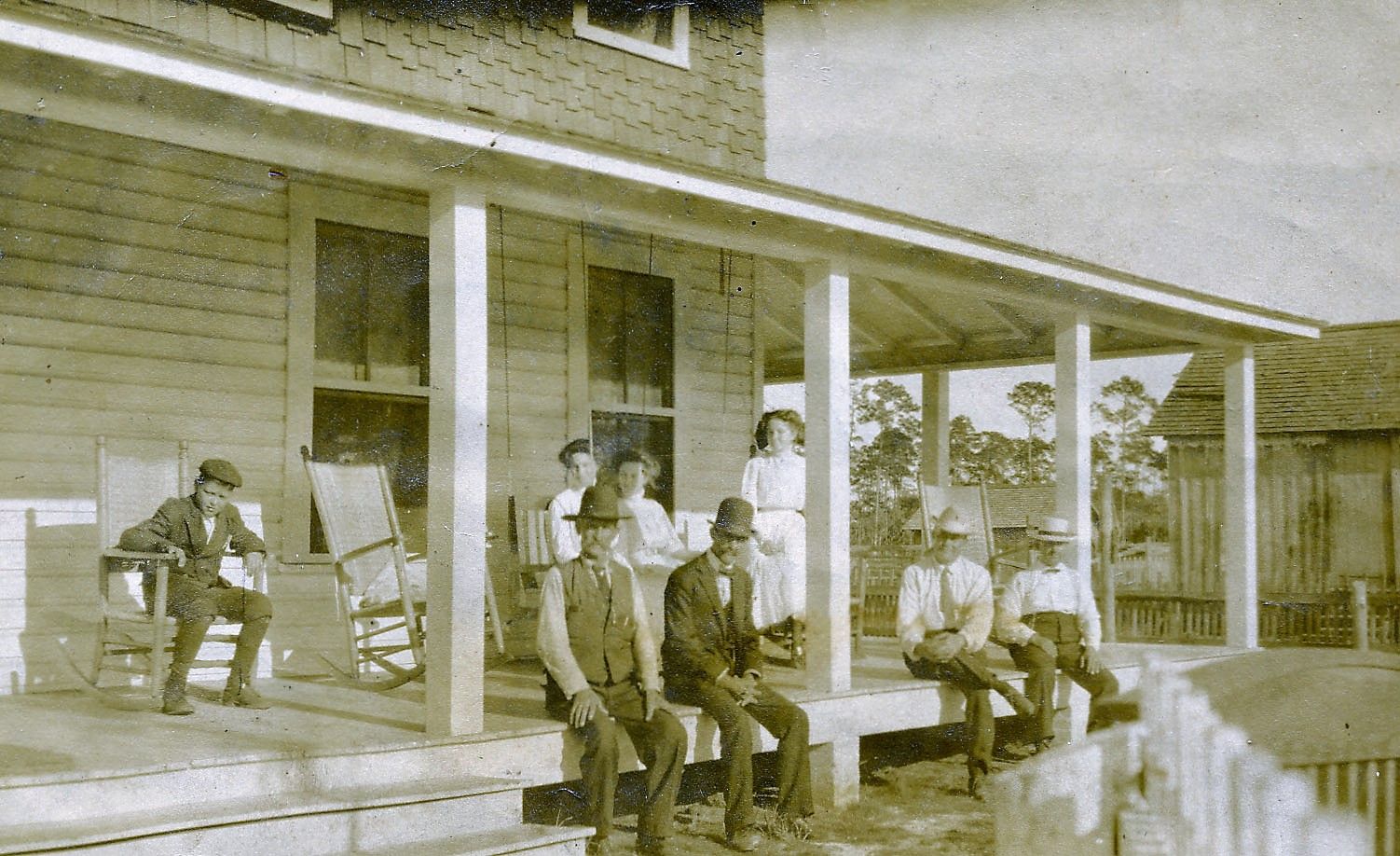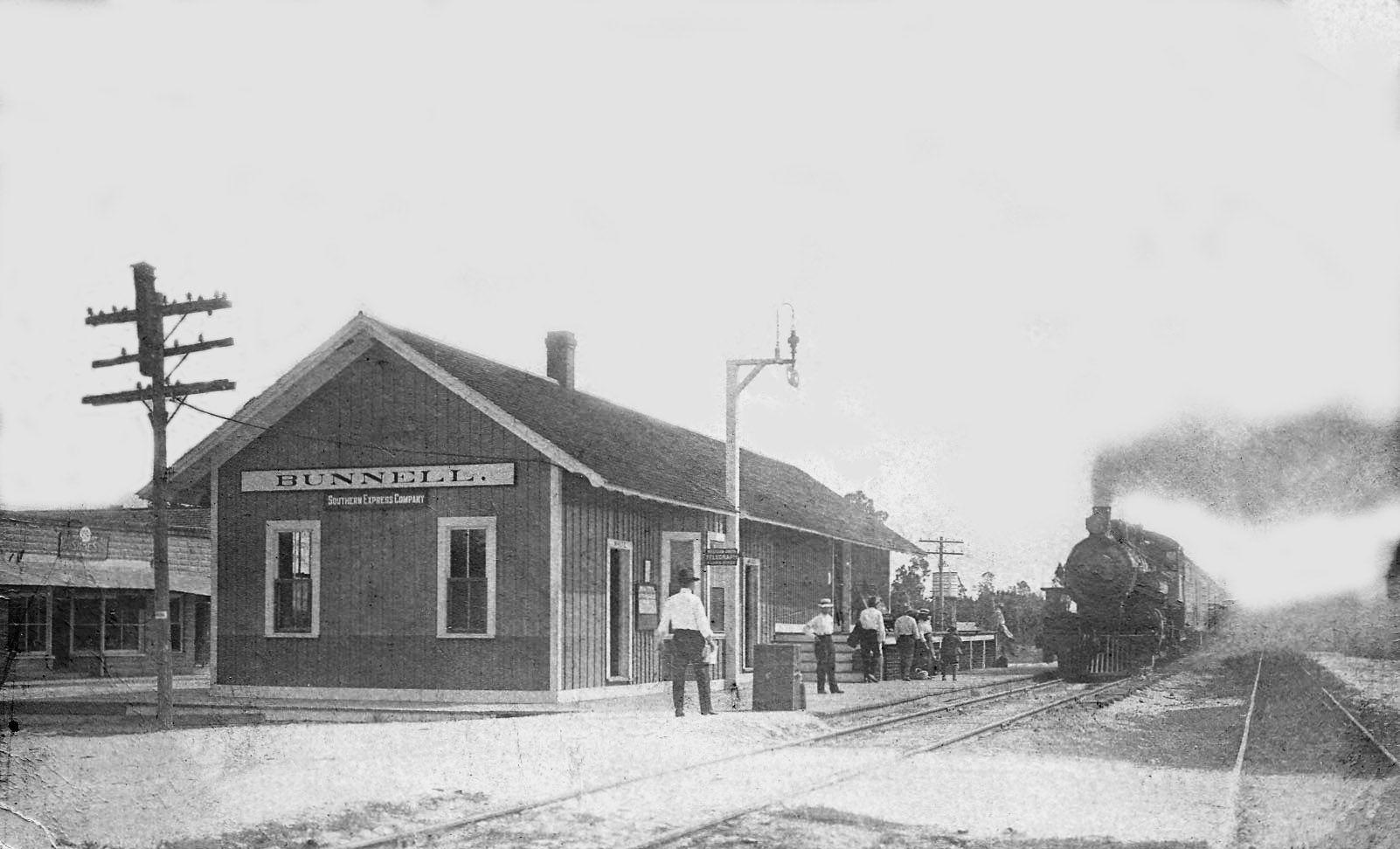History of Flagler County
Listen what it was like to be a Flagler County Sheriff in the early days Podcast by Daytona News Journal Reporter Tony Holt with guest Flagler County Sheriff Rick Staly!
Listen here: https://omny.fm/shows/sun-crime-state/a-sheriff-got-killed-then-a-posse-got-the-killer-e?t=10m21s
While Florida holds the distinction of being home to the nation’s oldest continuously inhabited city in St. Augustine, Flagler County is a relative newcomer.
Designated in 1917 by Florida Governor Sidney J. Catts, the modestly sized county made up of 571 square miles, is comprised of what was once parts of Volusia and St. Johns counties. Originally, Ormond Beach was to be part of Flagler County but the residents wanted to remain part of Volusia County. The residents won and Flagler County was shortened on the Atlantic coast to accommodate them. The county is named Flagler after railroad and business tycoon Henry Flagler who purchased and upgraded the railroad, providing economic stimulus to the diverse county that is rich with history.
Early records detail the history of Mala Compra Plantation and Bulow Plantation Ruins Historic sites, and Flagler County’s history predates the booming city of Palm Coast, Flagler’s most densely populated municipality and even Bunnell, linking the area which was once part of St. Johns and Volusia counties, to the Timucauan and Seminole Indian tribes and the Revolutionary and Civil Wars.
Long before there were neighborhoods known as sections Flagler County was made up of cattle ranches, potato farms and forests of turpentine stills. Initially made up of small towns such as Bunnell, which would become the county seat because of its central location, primary shipping points, businesses, roadways and railway access, Espanola, Shell Bluff, Dupont, Haw Creek, Bulow, Korona, Favoretta, Roy, Ocean City Beach (now Flagler Beach) and Dinner Island. The area began to flourish with the growth of the turpentine industry with turpentine camps at Bulow Still, Deen Still and St. Joseph Still and the upgrading of railways across Florida. Early villages included Andalusia, Bimini, Black Point, Codyville (now Cody’s Corner), Tomasello and Tipperary.
Flagler today is truly an example of Main Street, U.S.A., offering those looking a glimpse of the many sides of life in the diverse county. Residents and visitors may enjoy the budding city life within the boundaries of Palm Coast, the “Old Florida” lifestyle along the shores and shops of Flagler Beach, or a fresh from the farm experience among the agricultural fields and rural community of Bunnell and the western part of the county. Flagler County is also home to a pair of Florida Scenic Highways – the Heritage Crossroads, one of Flagler County’s earliest travel routes, and the nationally recognized A1A Scenic & Historic Coastal Byway, where the Marineland Dolphin Adventure, the world’s first underwater motion picture studio and oceanarium, is located. Marineland is known as the original Sea World.
Flagler County has been a draw for many notable historical figures including John Audubon, Ernest Hemmingway, Marjorie K. Rawlings, First Lady Eleanor Roosevelt and even Charles Lindbergh who made an emergency landing along the Flagler.
Not all of this history happened over night and modern day Flagler County’s story begins with turpentine, potato farming and a railroad.
During Flagler County’s early years buildings such as the Bunnell Mercantile Company was on the corner of South Bay Street and Moody Blvd in what was once the Tribune Building. The lumber mill of Ed Johnson, Hersey’s Wrecker Service, and the Masonic Lodge #200 – Bunnell’s first Fraternal Organization were all built by 1946. The Bunnell State Bank, Western Auto, Land ‘n’ Sea Fashions, the F.E.C. Railway Depot at Bunnell and the Halcyon Hotel, reflect a picturesque look at what was a promising young community.
During the county’s first half-century, the men who ran against each other in sheriff’s races and other elections were usually close acquaintances. They grew up together, attended the same school, dated each other’s cousins and socialized in the same circles. It was a small town back then. The population of Flagler County in 1920 was only 2,442 residents. The Ku Klux Klan would parade through Bunnell warning of the dangers of “loose women, gamblers, crooks and bootleggers.”
Large problems facing local law enforcement in the 1920s were illegal stills and moonshine runners. Illegal moonshine activities flourished into the 1960’s in the rural areas of Flagler County and Sheriff Homer Brooks made it a mission to stamp-out bootleggers. Occasionally we find a still today.
In the early days of law enforcement in rural Florida, before the county had a jail, the Sheriff would house and feed prisoners in his own home. Once a jail was constructed, it was common for the Sheriff to live at the jail with his family.
Often the Sheriff’s entire family would be called upon to help fight crime. For example, Sheriff Brooks would take his nieces on patrol with him and, in at least one case, had his wife and nieces help him catch a thief by leaving their valuables in plain sight on the beach, while Sheriff Brooks and his deputies watched and waited behind the sand dunes.
In 1965, the county jail was in need of an additional wing. The cost for the addition was $11,000. Today’s jail was expanded in 2016 at a cost of about $17 million dollars and has a capacity of 400 inmates. In the 1970’s, when inmates did not like their jail accommodations or meals they would write a letter to the Sheriff. They would complain about things like: “Need more syrup for pancakes;” “Put pepper on grits;” “No cold fruit desserts;” and would often end the letter with “We refuse to eat until negotiations have been made and met with approval.”
In 1924, the Old Flagler County Courthouse was built in a classical revival style (it is currently a private school). The Sheriff’s Office and other county offices were located in this building.
By 1980 Flagler County was transforming to a suburban county. Palm Coast overtook Bunnel as the driving economic force with housing developments, golf courses and traffic lights.
In 1985 wildfires raged through 27 counties, including Flagler. Florida Governor Bob Graham declared a state of emergency and thousands of Flagler County residents fled. Over 24,000 acres were burned and 331 homes were either destroyed or damaged. A second massive wildfire occurred in 1998 and Governor Lawton Chiles ordered the entire county evacuated. This was the first and only time in the history of Florida that all 45,000 residents of a county were under a mandatory evacuation order. The 1998 fires resulted in 82,000 acres being burned and 263 homes destroyed or damaged.
In 2004, multiple hurricanes struck Flagler County and in 2016 Hurricane Matthew struck Flagler County resulting in significant damage to State Road A1A, causing large sections of the road to wash into the Atlantic Ocean. Thousands of tress were knocked down and 161 homes were destroyed or damaged with almost 1,000 homes flooded from the tidal surge. Flagler County Sheriff’s Office was supported by the Florida National Guard, Florida Highway Patrol and deputies from the Martin County and Alachua County Sheriff’s Offices to enforce a countywide curfew and protect Flagler Beach.
In 2017, Hurricane Irma struck Florida and Flagler County and once again Flagler County received significant flooding on the west side and barrier island. Initially most of the county lost power but within one-week power was restored to the county. Again, Florida Highway Patrol and the Florida National Guard supported the Sheriff’s Office enforcing a curfew and the prohibition of liquor sales during the state of emergency.
With the entry of ITT, a development company, in 1969 to Flagler County and the creation of Palm Coast, an influx of families from the New York and New Jersey area began to populate the once predominantly southern communities of Flagler County. The next group of Flagler County sheriffs, hailing from northern locales, wrapped up the 20th century and would see big changes in not only the communities they would oversee but also the crimes they would encounter.




